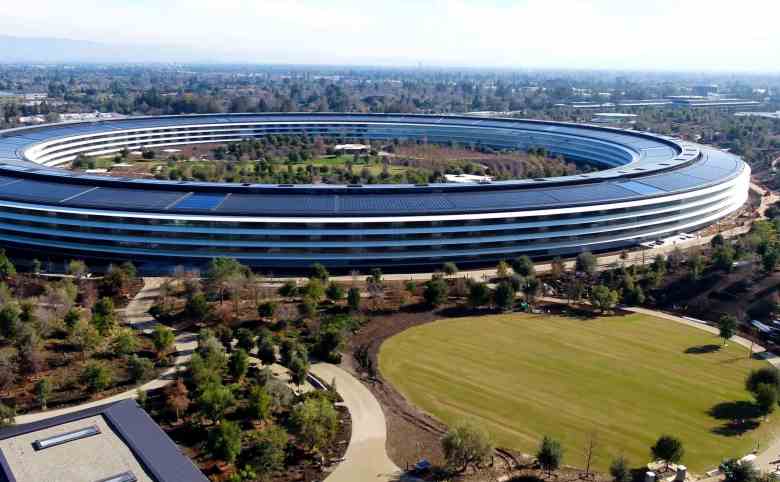Rivian has been at the forefront of the debate over electric vehicles and climate change, criticizing its competitors as being “far off track” on reducing greenhouse gas emissions in a way that can meet targets set by the Paris agreement.
Rivian CEO: ‘There’s far too much greenwashing in the system’
The EV company announced it’s purchasing 100MW of renewable energy from a soon-to-be-built solar farm located on top of a former coal mine in Kentucky. The energy will help power its fleet of electric trucks, SUVs, and vans to 450 million miles each year.
- “This is just so conceptually complex,” he said, making a clear distinction between companies that buy renewable energy to cover their own emissions while also creating new capacity and those who want to “pay a teeny little incremental amount more to get the ability to pat ourselves on the back and say we’re using renewable energy.”
Located on top of a ridge in eastern Kentucky, the Starfire mine at one point saw hundreds of miners hauling millions of tons of coal each year. But soon, it will be the site of a massive solar farm with the goal of creating 800 megawatts (MW) of energy — enough to power 160,000 homes each year. BrightNight, a Florida-based solar company, is also building a 10-mile transmission line to enable an additional one gigawatt of power capacity for the future.
Rivian will be an offtaker for the project, or a purchaser of the power generated from the site. The EV company is not directly funding the project, which is estimated to cost $1 billion, but it is committed to buying 100MW of energy as part of a virtual power purchase agreement (PPA) — virtual because the clean energy won’t be flowing directly into Rivian’s electric trucks, SUVs, or vans, or even the company’s corporate offices or factories. Nonetheless, Rivian says the energy will help “power up to 450 million miles of renewable driving every year.”
Rivian will be an offtaker for the project, or a purchaser of the power generated from the site
Virtual PPAs are becoming an increasingly popular form of clean energy commitment for American companies. In 2021, for example, corporations bought a record 31.1GW of clean energy, equivalent to more than 10 percent of all new renewable energy capacity added worldwide that year. Over half of the agreements came from tech giants, including Amazon, Microsoft, Meta, and Google.
- According to Scaringe, without these PPAs, many of these renewable energy projects wouldn’t be able to get off the ground.
- Rivian may not be financing the solar project directly, but it is ensuring that there will be a market for the energy when the photovotalic cells come online.
- “If companies aren’t making the commitment to purchase the power, which then makes the project financeable, these projects won’t happen,” he said.
Rivian isn’t the first automaker to commit to buying clean energy through a virtual PPA.
- Stellantis signed a 400MW agreement with DTE Energy in Michigan late last year, while
- Mercedes-Benz said it would buy 140MW from an offshore wind farm in the Baltic Sea.
Virtual PPAs are “easily scalable and enable buyers to satisfy a large portion of their sustainability goals with a relatively small number of deals,” the Rocky Mountain Institute wrote in a 2019 report.
According to Scaringe, without these PPAs, many of these renewable energy projects wouldn’t be able to get off the ground
Rivian has been at the forefront of the debate over electric vehicles and climate change, criticizing its competitors as being “far off track” on reducing greenhouse gas emissions in a way that can meet targets set by the Paris agreement. The company authored a report earlier this year, along with Polestar, arguing that EVs alone wouldn’t be enough to limit global temperature increases. The auto industry would need to play a stronger role in increasing renewable energy in power grids and reducing greenhouse gas emissions across its entire supply chain.
But the company still needs to go further. Rivian does not share its emissions data with CDP, a nonprofit that evaluates companies’ environmental reporting. CDP bases its requests on revenue and/or listing on the S&P 500. Ford, for example, has garnered “A” grades for its climate change disclosures since 2019, while Tesla earned “F” grades. There is a growing chorus of environmental advocates demanding more transparency from corporations around the full picture of their carbon emissions.
- Scaringe said that Rivian is working toward “Scope 3 neutrality,” meaning it has the goal of eliminating all of its indirect emissions from its supply chain and the lifecycle of the EVs it produces.
- A common criticism of EVs is that they are only as clean as their power source — in other words, if an EV is charging from a grid that primarily gets its power from a polluting source, like coal, then it can’t claim to be a truly clean mode of transportation.
- But “90 percent” of Rivian’s emissions are Scope 3 — its fleet of electric R1T trucks, R1S SUVs, and EDV delivery vans.
- And those emissions are why the company is agreeing to buy 100MW of energy from the solar farm in Kentucky, in addition to other PPAs.
- And the company is planning to offer a package that “could allow drivers to match their charging, no matter the location, with renewable energy,” Scaringe said.
“We create the supply that offsets the usage of our collective fleet and the fleet as it grows, it becomes a big consumer of energy,” he said. “A few years from now, the carpark of Rivians will be consuming more energy than the entire country of Ireland.”
Update July 26th 7:21AM ET: Updated to include details about CDP request criteria, and to clarify that Rivian’s wind turbine is for its scope 2 emissions.

/cdn.vox-cdn.com/uploads/chorus_asset/file/24809100/Bender_Bending_Rodri_guez_Outfit_and_Accessories.jpg)
:format(webp)/cdn.vox-cdn.com/uploads/chorus_asset/file/24803061/1508518031.jpg)

:format(webp)/cdn.vox-cdn.com/uploads/chorus_asset/file/22883207/mclark_210923_4776_0001.jpg)
/cdn.vox-cdn.com/uploads/chorus_asset/file/24808527/ezgif.com_webp_to_png__2_.png)



No comments:
Post a Comment